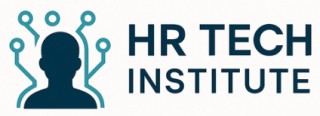
Understanding HR Document Management
Fundamentals of Managing HR Documents
Efficient management of HR documents is fundamental to any organization aiming to streamline its operations and enhance employee satisfaction. The concept of document management in HR involves organizing, storing, and managing employee records, performance reviews, and other critical files in a way that is easily accessible and secure. A document management system entails a systematic approach to handling these documents, aiming to save time and ensure compliance with legal standards. At its core, HR document management focuses on the following:- Accessibility: Ensuring that employee files and documents can be accessed promptly, without cumbersome processes. This not only saves time but also improves the overall efficiency of your HR department.
- Security and Compliance: Maintaining the integrity and security of sensitive employee data. With increasing data security challenges, implementing robust security measures is crucial to prevent unauthorized access and ensure compliance with relevant regulations.
- Efficiency and Automation: Automating repetitive processes through management software can alleviate the burden on HR professionals, allowing them to focus on more strategic tasks.
Common Challenges in HR Document Management
Addressing Common Issues in Managing HR Documents
HR document management can often present a unique set of challenges for organizations. These hurdles can impact efficiency and compliance if not effectively managed. Let's delve into some of the most prevalent issues faced by human resources teams.
- Data Overload: Handling vast amounts of employee files and records can be daunting. Physical storage is often limited, and digital solutions can sometimes get cluttered without a well-organized system. Cloud-based solutions can help, but the management system must be carefully tailored to the organization's needs.
- Compliance with Regulations: Ensuring that all employee documents comply with legal and regulatory requirements is crucial. Failure to maintain compliance can lead to costly penalties. An automated document management system, with features that support compliance checks, can alleviate some of these pressures by ensuring all documents meet the necessary standards.
- Access and Security Concerns: Ensuring that employees have access to the necessary documents without compromising data security is a common struggle. Designing a secure system that allows access to appropriate documents while protecting sensitive information is critical.
- Time-Consuming Processes: Human resources departments often struggle with labor-intensive tasks such as filing and retrieving employee records. Implementing management software that supports automated workflows can save significant time and resources.
- Disparate Systems: Often, businesses use multiple document management systems that don't seamlessly integrate, resulting in inefficiencies. A cohesive HR management platform that integrates various processes can enhance coordination and reduce redundancies.
Given these challenges, it becomes clear that a strategic approach to managing HR documents is needed. If managed effectively, organizations can optimize efficiency and enhance performance. For more insights on the role of technology and employee policies in overcoming these issues, visit this comprehensive guide.
Technological Solutions for HR Document Management
Harnessing Technology to Streamline Document Processes
The integration of technological solutions into HR document management is pivotal for streamlining processes and enhancing efficiency. Organizations are increasingly turning to comprehensive management software designed to simplify handling and storage of employee documents and files. Utilizing such tools helps manage vast volumes of data efficiently while reducing time spent on manual processes. Modern management systems come with features like automated workflows that eliminate bottlenecks in document handling processes. These systems allow HR departments to move away from cumbersome paper files to organized digital document storage, which improves overall efficiency and accessibility. A core benefit of using these technological solutions is the ability to create a secure, cloud-based environment for employee files. This facilitates reliable access to employee records from any location, ensuring that critical information is available whenever and wherever needed. Moreover, it significantly aids in compliance as businesses can maintain accurate, up-to-date records with ease. Document management software also provides enhanced data security features to protect sensitive employee information. As HR departments often deal with confidential data, implementing robust measures to secure digital files and limit access only to authorized personnel is crucial. Incorporating secure file management systems thus becomes an integral part of best practices in HR. For organizations to truly leverage the potential of HR tech solutions, opting for a reliable HR document manager can provide significant improvements in document management efficiency. Choosing the right system tailored to business needs ensures smoother operations and better management of employee documents in the long run.Best Practices for Effective Document Management
Adopting Industry-Proven Techniques
The transition to effective HR document management requires organizations to adopt industry-proven techniques. By doing so, companies can ensure their processes are efficient and align with best practices. At the heart of any successful HR document management strategy is the implementation of streamlined systems and technologies. Utilizing a comprehensive management software allows for a more organized system of handling employee documents and employee files.
Implementing Automated Workflows
Introducing automated workflows helps in reducing the time spent on manual processes. This not only increases efficiency but also ensures the accuracy of employee records. Businesses benefit significantly by adopting a solution that integrates document software with their existing HR operations. Features such as automatic updates and notifications make accessing digital documents easier and more secure.
Ensuring Data Security and Compliance
Data security is another essential element in document management. Organizations need to prioritize data security by selecting secure solutions that protect sensitive employee data. Compliance with industry standards and regulations is a must to safeguard against potential breaches. Leveraging cloud-based systems, businesses can enhance the security of their document storage.
Integrating Features for Enhanced Accessibility
For even greater productivity, integrating features that promote easier accessibility to employee documents is crucial. A reliable document manager will permit authorized personnel to access documents anytime and anywhere. The ability to organize by categories, such as performance reviews or compliance reports, helps in maintaining a clear structure and enhances the functionality of the entire file management process.
The Role of Security in HR Document Management
Essential Measures for Securing HR Documents
In the realm of human resources, managing documents is crucial, yet ensuring their security is paramount. HR departments deal with a myriad of sensitive employee documents, from performance reviews and employee records to compliance files and digital documents. Securing this data is critical, not only for the integrity of the organization but also to meet compliance requirements. HR document management involves several components that ensure both safe storage and controlled access to sensitive information. Implementing a digital document management system aids in this process as it provides secure mechanisms for storing and retrieving files efficiently. Here are key considerations:- Restrictive Access Control: Implementing access controls within your document management software limits who can view and modify employee files. Leveraging management software with robust user permissions allows organizations to designate specific access levels to different employees based on their roles.
- Data Encryption: Encryption is vital when storing or transferring files. It guarantees that even if data is intercepted, it remains unreadable to unauthorized users. Businesses should prioritize encryption in both their management systems and during document storage.
- Secure Automated Workflows: Automating document processes improves efficiency and reduces human error, but integrating secure workflows is crucial to prevent unauthorized access or leaks. Features such as audit trails in document software track changes and access, making it easier to monitor system security.
- Cloud-Based Storage Solutions: Cloud-based document management offers not only scalability but also enhanced security. Many cloud solutions come with built-in security features like advanced encryption, automated backups, and redundancy measures, ensuring that employee document access is both secure and reliable.













